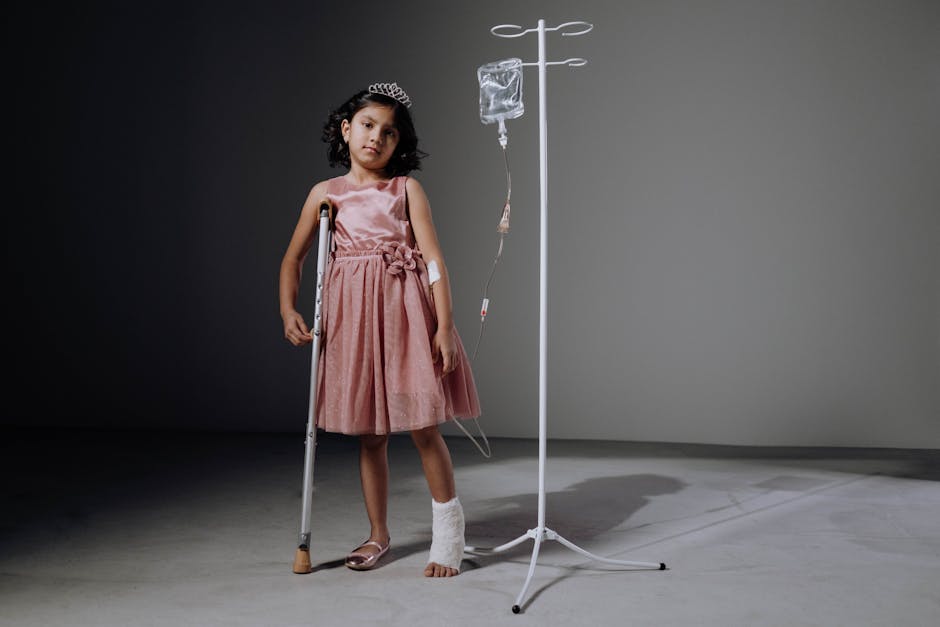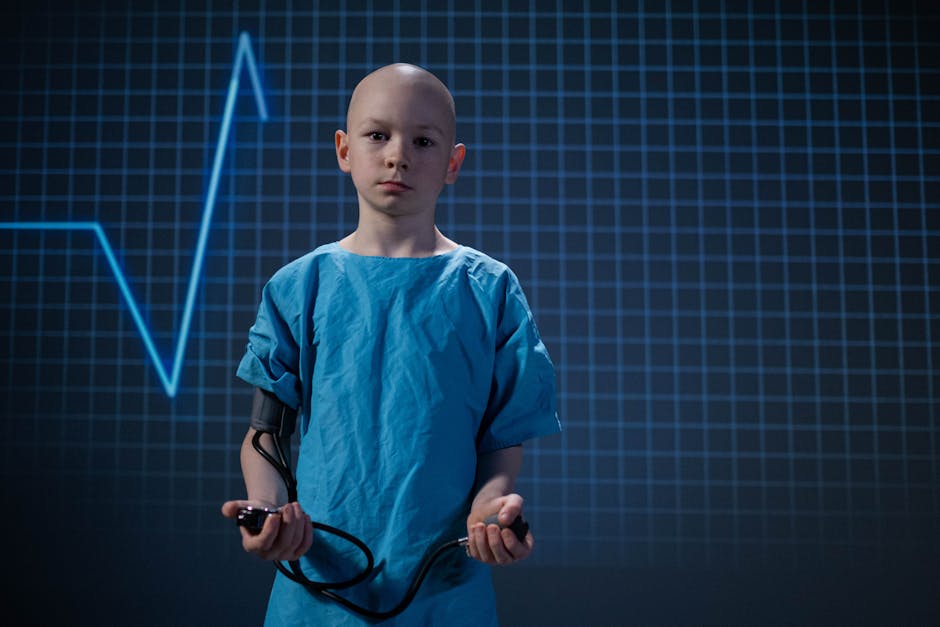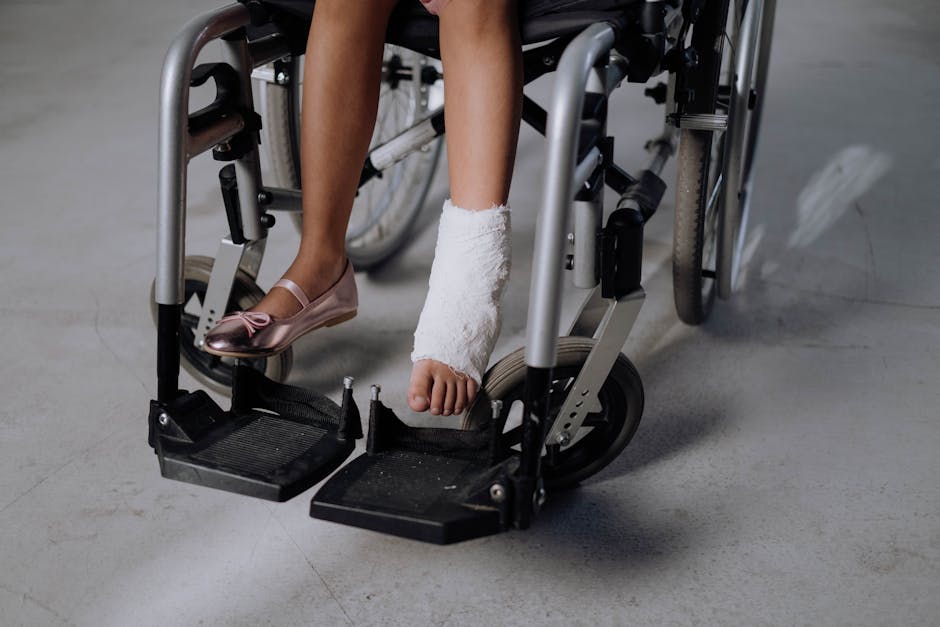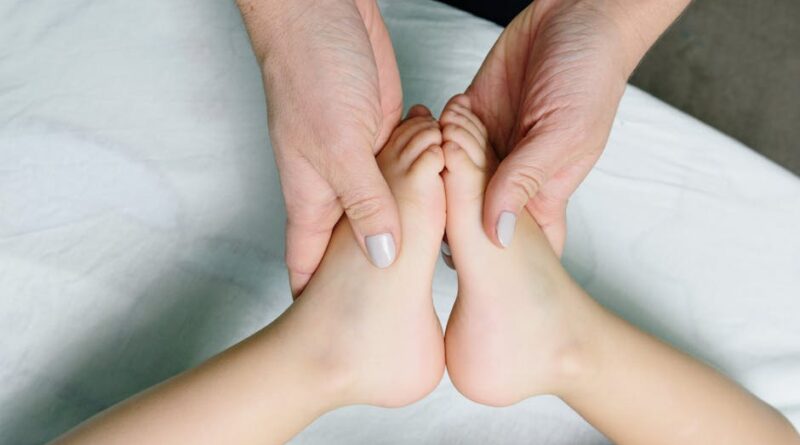Unlocking the Power of Physical Therapy for Children
When we think of physical therapy, we often associate it with adults recovering from injuries or surgeries. However, the benefits of physical therapy extend far beyond the realm of adulthood. Children, too, can greatly benefit from physical therapy to aid in their development, address physical challenges, and enhance their overall well-being. In this comprehensive guide, we will delve into the world of physical therapy for children, exploring its importance, applications, and impact on young lives.
The Foundation of Physical Therapy for Children

Physical therapy for children, also known as pediatric physical therapy, focuses on improving mobility, strength, and flexibility in children who have developmental delays, injuries, or disabilities. This specialized form of therapy aims to enhance a child’s motor skills, balance, coordination, and overall physical function. From infants to adolescents, children of all ages can benefit from the targeted interventions provided by pediatric physical therapists.
One of the primary goals of pediatric physical therapy is to help children achieve their maximum potential in movement and physical function. Whether a child is struggling with walking, balance, or posture, a pediatric physical therapist works to address these challenges through a variety of exercises, activities, and interventions tailored to the individual needs of each child.
The Role of a Pediatric Physical Therapist

A pediatric physical therapist plays a crucial role in the lives of children with physical challenges. These highly trained professionals work closely with children and their families to assess their needs, set goals, and create personalized treatment plans. Through a combination of hands-on therapy, exercises, and activities, pediatric physical therapists help children build strength, improve mobility, and enhance their overall quality of life.
Some of the key responsibilities of a pediatric physical therapist include:
- Conducting thorough evaluations to assess a child’s physical abilities and challenges
- Designing individualized treatment plans to address specific goals and needs
- Teaching children and their families how to perform exercises and activities at home
- Monitoring progress and making adjustments to the treatment plan as needed
By working collaboratively with other healthcare professionals, educators, and caregivers, pediatric physical therapists ensure that children receive comprehensive care that supports their physical development and overall well-being.
Common Conditions Treated with Pediatric Physical Therapy

Children may require physical therapy for a variety of reasons, ranging from developmental delays to injuries and medical conditions. Some of the common conditions that pediatric physical therapy can help address include:
Cerebral Palsy
Cerebral palsy is a neurological disorder that affects a child’s ability to control their muscles and coordinate their movements. Pediatric physical therapy plays a vital role in helping children with cerebral palsy improve their motor skills, balance, and mobility. Through targeted interventions, children with cerebral palsy can enhance their independence and quality of life.
Developmental Delays
Developmental delays can impact a child’s physical, cognitive, and social development. Pediatric physical therapy can help children with developmental delays reach their milestones by focusing on improving their motor skills, strength, and coordination. By addressing these delays early on, pediatric physical therapists can support children in achieving their full potential.
Sports Injuries
Children who participate in sports are at risk of sustaining injuries that can affect their mobility and physical function. Pediatric physical therapy plays a crucial role in helping young athletes recover from injuries, regain strength, and safely return to their sport. By providing tailored rehabilitation programs, pediatric physical therapists help children get back on their feet and prevent future injuries.
Orthopedic Conditions
Orthopedic conditions such as scoliosis, clubfoot, or fractures can impact a child’s musculoskeletal system and mobility. Pediatric physical therapy focuses on addressing these orthopedic challenges through targeted exercises, manual therapy, and interventions that promote healing and improve function. By working closely with orthopedic specialists, pediatric physical therapists help children with orthopedic conditions achieve optimal musculoskeletal health.
The Benefits of Physical Therapy for Children

The benefits of pediatric physical therapy are vast and far-reaching, impacting children’s physical, emotional, and social well-being. Some of the key benefits of physical therapy for children include:
Improved Mobility
Physical therapy helps children improve their mobility, coordination, and balance, enabling them to move more effectively and independently. By strengthening their muscles and enhancing their motor skills, children can navigate their environment with greater ease and confidence.
Enhanced Strength and Endurance
Through targeted exercises and activities, pediatric physical therapy helps children build strength, endurance, and stamina. By gradually increasing the intensity of their workouts, children can improve their physical fitness and performance in daily activities.
Reduced Pain and Discomfort
Children with physical challenges or injuries may experience pain, discomfort, or limited range of motion. Pediatric physical therapy focuses on alleviating pain, improving flexibility, and restoring function, allowing children to engage in activities with greater comfort and ease.
Improved Quality of Life
By addressing physical limitations and enhancing mobility, pediatric physical therapy improves children’s overall quality of life. Children who receive physical therapy experience increased independence, confidence, and participation in daily activities, leading to a more fulfilling and enriched life.
Prevention of Secondary Complications
Physical therapy plays a crucial role in preventing secondary complications that may arise from physical challenges or injuries. By addressing musculoskeletal imbalances, weakness, or poor posture, pediatric physical therapy helps children avoid future injuries and maintain optimal physical function.
Empowerment and Independence
Through physical therapy, children gain the skills, confidence, and independence to manage their physical challenges and navigate their environment with greater autonomy. By empowering children to take charge of their health and well-being, pediatric physical therapy sets the foundation for a lifetime of healthy habits and self-care.
Expert Opinions on Physical Therapy for Children
Leading experts in pediatric physical therapy emphasize the importance of early intervention, individualized care, and family involvement in supporting children’s physical development. According to Dr. Sarah Jones, a renowned pediatric physical therapist, “Early intervention is key to maximizing a child’s potential and achieving optimal outcomes. By addressing physical challenges early on and providing targeted interventions, we can help children thrive and reach their full potential.”
Dr. Jones also highlights the importance of a holistic approach to pediatric physical therapy, stating, “Physical therapy is not just about exercises and interventions. It’s about empowering children to overcome their challenges, build resilience, and lead active, fulfilling lives. By involving families, educators, and healthcare providers in the treatment process, we can create a supportive environment that fosters children’s growth and development.”
Common Misconceptions about Physical Therapy for Children
Despite the numerous benefits of pediatric physical therapy, there are some common misconceptions that persist about this specialized form of therapy. One of the misconceptions is that physical therapy is only for children with severe disabilities or injuries. In reality, pediatric physical therapy can benefit children of all abilities and needs, from those with minor motor delays to those recovering from sports injuries.
Another misconception is that physical therapy for children is primarily focused on exercises and stretches. While physical therapy does involve therapeutic exercises, it also includes play-based activities, games, and creative interventions that engage children and make therapy sessions fun and enjoyable. Pediatric physical therapists use a variety of approaches to help children achieve their goals and make progress in their physical development.
FAQs about Physical Therapy for Children
Q: At what age can children start physical therapy?
A: Children can start physical therapy at any age, from infancy to adolescence. Early intervention is key to addressing developmental delays, motor challenges, and injuries, as it supports children’s optimal development and well-being.
Q: How long does a typical physical therapy session for children last?
A: The duration of a physical therapy session for children can vary depending on the child’s needs and goals. Sessions typically range from 30 minutes to one hour and may occur once or multiple times per week, as determined by the child’s treatment plan.
Q: What can parents do to support their child’s progress in physical therapy?
A: Parents play a crucial role in supporting their child’s progress in physical therapy by encouraging consistency in home exercises, providing a supportive environment for physical activities, and communicating openly with the pediatric physical therapist about their child’s needs and progress.
To Wrap Things Up
Physical therapy for children is a dynamic and transformative field that holds immense potential for improving the lives of young individuals. By focusing on mobility, strength, and function, pediatric physical therapy empowers children to overcome physical challenges, enhance their quality of life, and reach their full potential. Through early intervention, personalized care, and family involvement, pediatric physical therapy sets the stage for a lifetime of health, well-being, and independence for children of all abilities.




